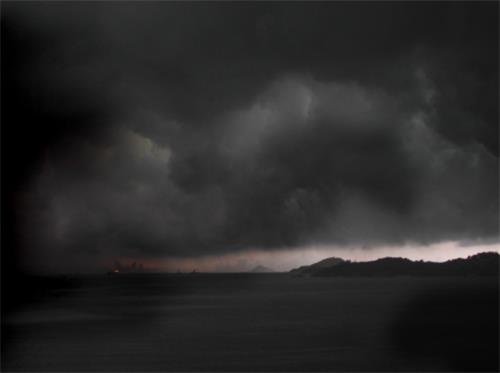
On May 19, 1780, an unusual astronomical phenomenon occurred in the New England region of North America and parts of Canada—known as the "Black Day." On this day, the sky suddenly grew dark during the daytime, as though an endless night had fallen. Due to the limited scientific knowledge of the time, many believed it to be some sort of supernatural omen. Even today, this event is still regarded by some as a symbol of a mysterious occurrence.
New England is a region in the northeastern United States, comprising the states of Connecticut, Maine, Massachusetts, New York, Rhode Island, and New Hampshire, bordering the Atlantic Ocean and Canada. Historical records show that on May 19, 1780, the sky in this region suddenly darkened, and no sunlight pierced through the clouds throughout the day. Many people were confused and frightened, believing it to be a sign of divine anger, with some even considering it a harbinger of the apocalypse. In response to the sudden darkness, residents had to light candles at midday for illumination. Meanwhile, birds began chirping at night, flower petals closed, and animals exhibited unusual behavior.
However, with scientific advancements, particularly recent studies, the explanation for the "New England Black Day" phenomenon has shifted. Over the past two centuries, many scholars have proposed various hypotheses. Early scientists believed the phenomenon might have been related to a volcanic eruption, as volcanic eruptions release large amounts of ash into the atmosphere, blocking sunlight and causing darkness at the surface. However, this explanation lacked direct evidence.
It wasn't until 2008 that a research team from Missouri State University combined contemporary written records with the local natural environment to propose a new explanation. The researchers found that large-scale wildfires in Canada around 1780 were likely the direct cause of the "New England Black Day." In the 1780s, severe forest fires occurred in parts of Canada, which not only destroyed large areas of forest but also generated massive smoke columns. These smoke columns were carried into the upper atmosphere by strong winds and remained there for an extended period, creating a dense layer of smoke that severely blocked sunlight, resulting in the "Black Day" phenomenon.
To verify this hypothesis, the researchers analyzed tree samples from the Algonquin Highlands and surrounding areas in southern Ontario. By examining the tree rings, scientists discovered that these trees had experienced significant fires during that time. The bark of the trees had been scorched, and signs of shedding appeared years later. This phenomenon indicated that the high temperatures and smoke from the fires indeed affected the structure of the atmosphere, leading to the "Black Day."
This research provides a scientific explanation for the "New England Black Day" and reveals the significant impact that natural wildfires can have on the atmosphere. The study showed that when large amounts of ash and particles enter the atmosphere, they can reflect or scatter sunlight, creating an effect similar to a solar eclipse, which causes the daylight to darken. Through this process, the smoke from the fires spread through the atmosphere, resulting in widespread darkness in the sky.
Although modern science has provided a reasonable explanation, the "New England Black Day" remains a captivating historical event, especially considering the lack of advanced scientific tools and theories at the time. People's reactions to this phenomenon not only reflect their reverence for the forces of nature but also demonstrate the deep fear humans have of the unknown.

Bicycle
This Bicycle Sells for $1 Million! How Do Technology and Luxury Merge on Two Wheels?
The House Of Solid Gold, an American company, has launched the world’s most expensive bicycle—named "Beverly Hills"—with a price tag of $1 million.

Fish
Why Do Fish Drown Even Though They Live in Water?
As aquatic creatures, fish primarily use gills as their main respiratory organs to extract oxygen from water. Since they live in water, it seems theoretically impossible for them to "drown" in the way land animals do.

Volcano,Pocket Gophers
How Can Two Pocket Gophers Transform a Volcano in 24 Hours?
On May 18, 1980, Mount St. Helens in Washington State, USA, erupted suddenly, releasing volcanic ash and sulfur dioxide that caused unprecedented environmental damage.


